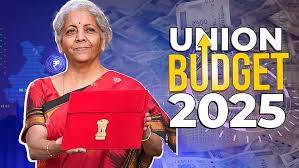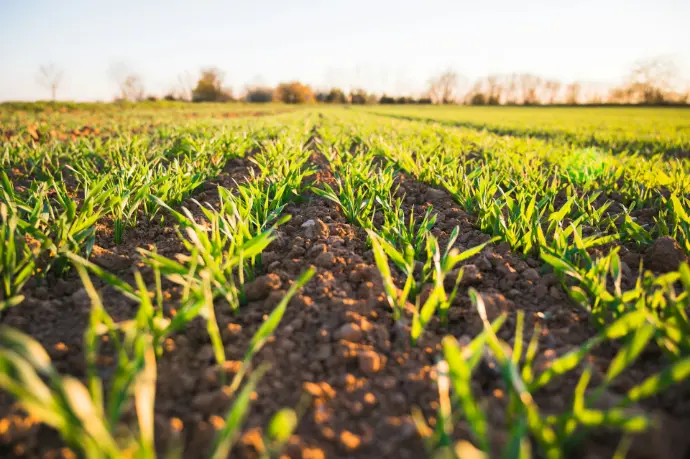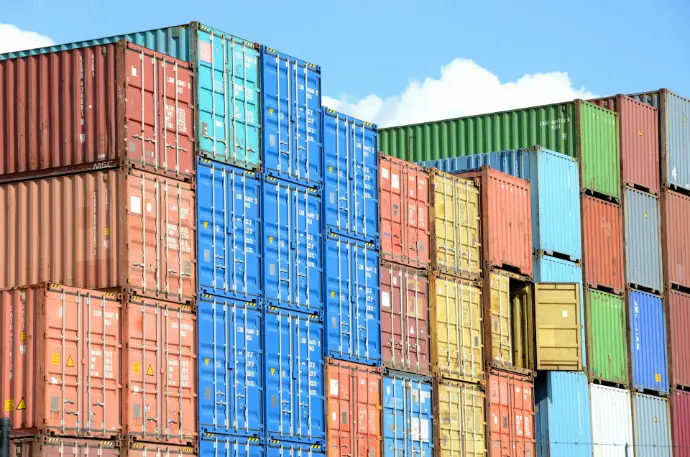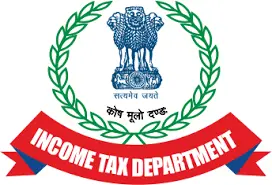
The Union Budget 2025-26, presented by Finance Minister Nirmala Sitharaman on February 1, 2025, lays the foundation for India's economic trajectory for the next fiscal year. With a focus on growth acceleration, inclusivity, and investment-driven reforms, the budget outlines key initiatives across agriculture, MSMEs, investment, exports, and fiscal policy.
Key Budget Theme
The budget is structured around four engines of growth:

Agriculture
Strengthening farming and rural prosperity

MSMEs
Empowering small businesses and startups
Investment
Driving infrastructure and economic expansion

Exports
Boosting global trade opportunities
Agriculture and Rural Development
Prime Minister Dhan-Dhaanya Krishi Yojana:
- Aims to enhance productivity in 100 districts with low output.
- Focus on irrigation, crop diversification, and better credit access.
Mission for Aatmanirbharta in Pulses:
- Special emphasis on Tur, Urad, and Masoor to achieve self-sufficiency.
- Increased procurement by NAFED and NCCF.
Support for Farmers:
- Kisan Credit Card (KCC) loan limit increased from Rs 3 lakh to Rs 5 lakh.
- Establishment of a Makhana Board in Bihar.
- Urea plant in Assam to boost fertilizer production.
Boost to MSMEs and Startups
- MSME Classification Limit Increased: Investment and turnover criteria enhanced to 2.5x.
- Credit Guarantee Cover Raised:
- From Rs 5 crore to Rs 10 crore for micro and small enterprises.
- From Rs 10 crore to Rs 20 crore for startups.
- New Fund of Funds: Rs 10,000 crore additional support for startups.
- Special Scheme for First-Time Entrepreneurs: Rs 2 crore loan support for women, SC/ST entrepreneurs.
- Footwear & Leather Focus: Scheme to generate 22 lakh jobs.
Investment in Infrastructure and Economy

- Public-Private Partnership (PPP) Projects: Three-year infrastructure pipeline for ministries.
- Urban Challenge Fund: Rs 1 lakh crore for city development.
- Shipbuilding Reforms: Credit notes and tax incentives for the industry.
- Regional Connectivity Expansion:
- Modified UDAN Scheme for 120 new destinations.
- New Greenfield Airports in Bihar.
- Nuclear Energy Expansion:
- Development of 100 GW nuclear energy by 2047.
- Rs 20,000 crore for Small Modular Reactors (SMRs).
Export Growth and Global Trade
- Bharat Trade Net: Digital platform for seamless trade documentation.
- Export Promotion Mission: Sector-specific strategies for global competitiveness.
- Tax Incentives for Exporters: Reduced duty on air cargo warehousing and marine exports.
Taxation and Fiscal Policy Reforms

Fiscal Policy and GDP Outlook
- Fiscal Deficit Target:
- Revised estimate for FY 2024-25 at 4.8% of GDP.
- Target for FY 2025-26 set at 4.4% of GDP.
- Total Receipts (excluding borrowings): Rs 34.96 lakh crore.
- Total Expenditure: Rs 50.65 lakh crore.
- Net Tax Receipts: Rs 28.37 lakh crore.
- Market Borrowings:
- Net borrowings from dated securities: Rs 11.54 lakh crore.
- Gross market borrowings: Rs 14.82 lakh crore.
Direct Tax Changes

- New Personal Income Tax Regime:
- No tax for income up to Rs 12 lakh.
- New slabs:
- Rs 0-4 lakh – Nil
- Rs 4-8 lakh – 5%
- Rs 8-12 lakh – 10%
- Rs 12-16 lakh – 15%
- Rs 16-20 lakh – 20%
- Rs 20-24 lakh – 25%
- Above Rs 24 lakh – 30%
- TDS and TCS Rationalization:
- Senior citizens’ TDS exemption limit increased to Rs 1 lakh.
- Rental TDS threshold increased to Rs 6 lakh.
- TCS on foreign remittances for education loans removed.
Indirect Tax Changes

- Customs Duty Reduction:
- Lifesaving drugs, lithium-ion battery components, and shipbuilding materials exempted.
- Knitted fabrics, electronic parts, and interactive displays duty increased.
- GST Reforms:
- Input Tax Credit (ITC) process streamlined.
- New penalties for non-compliance with track-and-trace regulations.
Conclusion
The Union Budget 2025-26 aims to drive self-reliance, ease of doing business, and economic inclusion. With tax relief for the middle class, MSME support, agricultural reforms, and large-scale infrastructure investments, the government envisions a pathway to a Viksit Bharat (Developed India).
Stay tuned for further updates and expert analysis on how these measures will impact various sectors of the economy.